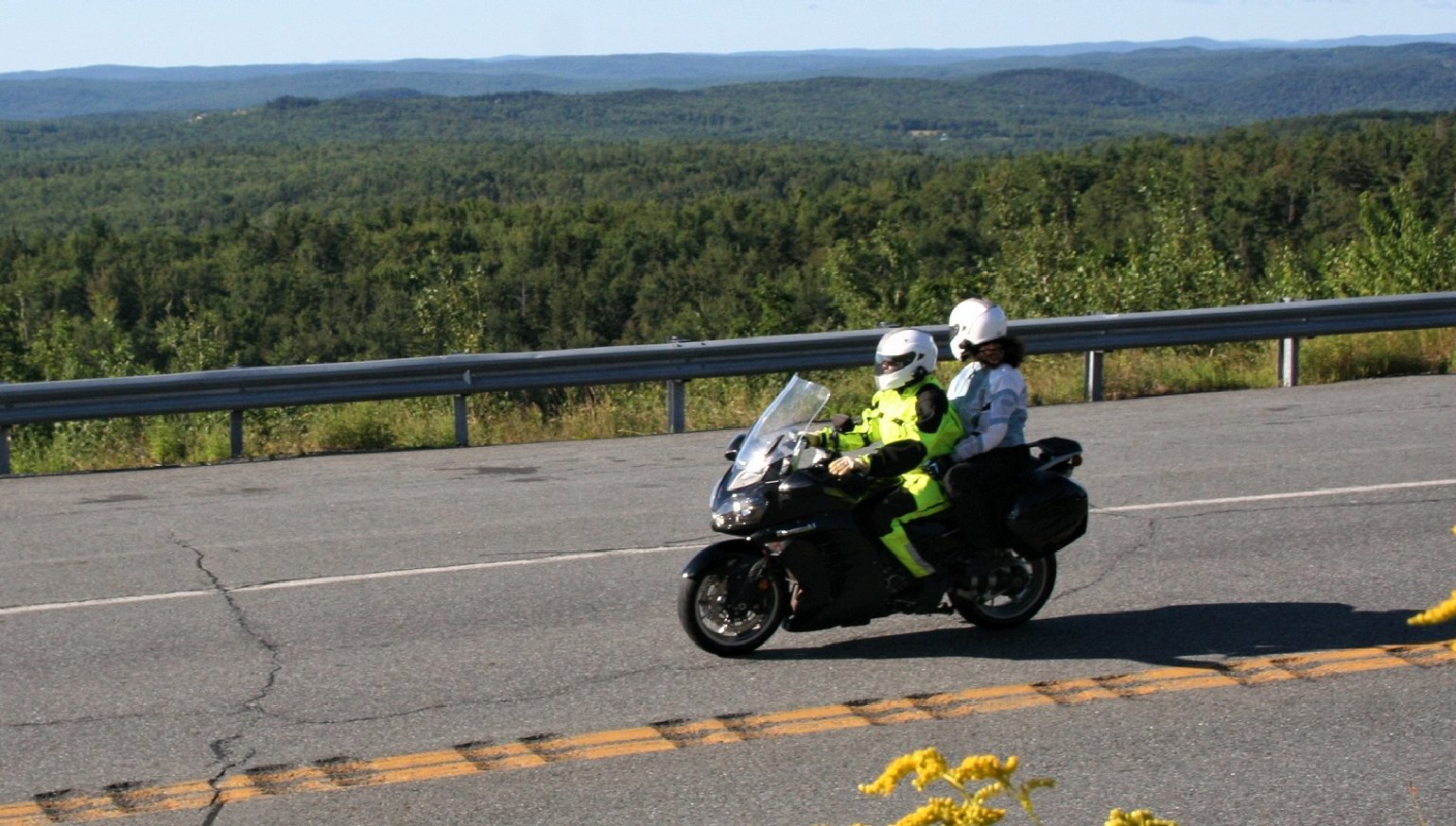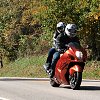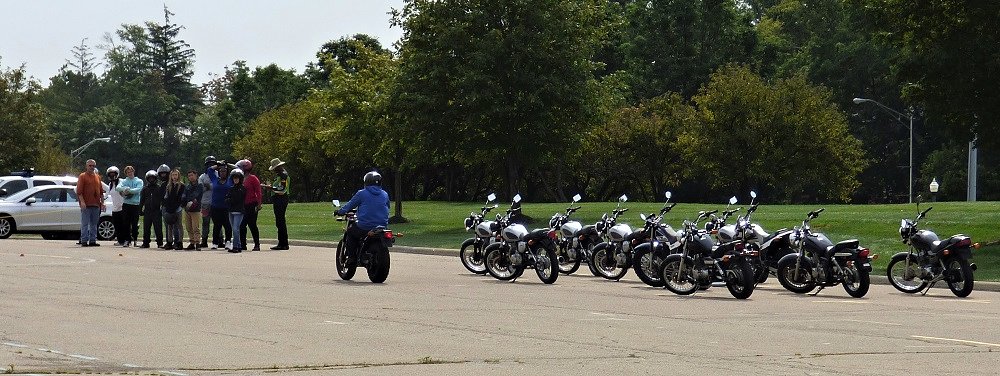The motorcycle safety debate has plenty of chatter on how everyone and their brother can get licensed with little instruction or experience. But there’s little talk about being prepared to add a passenger.
Putting your brother, girlfriend, or neighbor on the back seat significantly changes how your motorcycle handles. Not only does it add a lot of pounds, it also adds a lot more responsibility than someone riding shotgun in your Ford. Yet, in the United States there are almost no restrictions on who can take a passenger on a motorcycle. Very little training in riding two-up is available and there are no reliable statistics on how two-up riding affects safety.
That raises some important questions, starting with how a passenger impacts your bike’s performance.

Learning two-up riding the hard way
My first two-up riding impression — gained when I started toting my brother on trails to our makeshift motocross track — was how sluggish the bike’s handling became. Getting on the gas took weight and stability off the front wheel. Braking too hard slid us both forward, overloaded the fork and caused the front end to wash out. Stopping distances increased. And my riding definitely impacted more than me, as my brother pointed out vocally the times I dumped us both into the dirt.
My takeaway was that all the core skills for riding a motorcycle well ― balance and coordination of the clutch, throttle and brake ― became twice as important with someone on the back.
Actually, adding a passenger affects riding before you even start rolling, said Jason Humphries, director of the SoCal Pro Rider education school.
“The first thing is getting on or off the bike is different,” he explained. “You need to make sure you are immobile with both feet on the ground, front brake on, and that your motorcycle is as stable as possible before your passenger gets on. Otherwise, you could put your bike and passenger down before even getting in gear.”
Once you’re moving, two-up riding becomes a team sport.
“It’s important to have a conversation with your passenger on cornering,” said Humphries. “It’s critical that the passenger is as neutral as possible ― that they don’t tense up, fight the bike when you learn, or lean right when you lean left. Any of that will cause the bike to sit up or wobble when you corner.”
It’s also important to recognize the different physics of a passenger-laden bike, according to Motorcycle Safety Foundation’s (MSF) Ken Glaser.
“Compared to a car, where passenger weight is a minor component of total vehicle weight, the weight of two passengers could be half or more of a motorcycle,” he said. “That changes the dynamics of your vehicle significantly.”
Two-up: few stats, few rules, little training
Passenger safety data is sparse since NHTSA’s Center for Statistics and Analysis doesn’t do passenger-specific motorcycle research, a spokesperson confirmed. The NHTSA’s latest “Motorcycle Traffic Safety Facts” does indicate that 292 — or 6 percent — of 2015’s 4,976 motorcyclist fatalities were passengers. It’s hard to draw conclusions from this, however.
These numbers can’t be compared to data on non-fatality passenger-related crashes or accidents per vehicle miles traveled by passenger-carrying bikes, since the latter two are not compiled.
In terms of regulation, some states, such as California and Connecticut, include age and learner permit restrictions for riders carrying passengers. But Glaser said he is unaware of any specific two-up instruction or testing to get a motorcycle license in the United States.
“We’ve never seen that, but there is regulation in most states that…your motorcycle must be equipped with a passenger seat, footrests, and possibly handholds to ride a passenger,” he said.
Riders who voluntarily seek instruction on riding with a passenger also have few options. The MSF ― which manages training sites and curriculum for rider licensing courses in 47 states ― does offer some two-up-specific rider instruction.
“We talk about passenger riding in our Basic Rider Course 1, but there’s not specific instruction,” said Glaser. “In our BRC2 course, you are allowed to carry passengers.”
Not everyone is allowed to do the BRC2 course two-up, however.
“In the first exercise, the instructor will assess your capabilities and say yea or nay about doing the course with a passenger,” said Glaser.

Who should and shouldn’t ride with a passenger?
Since most motorcyclists don’t have an instructor to give them a thumbs up for two-up riding, who should (or shouldn’t) be doing it?
“I would avoid it if you’re in your early skill level,” said Humphries. “Riding a passenger and the extra weight puts a premium on handling and control. You’ve got to be more cognizant of stability… smoothness; braking, acceleration, and handling. If you don’t have that experience in your toolbox, it’s going to be problematic carrying a passenger.”
MSF’s Glaser echoed this view. “Riding solo is something you should be good at, and you should definitely understand the dynamics of cornering, braking, and accelerating, before you take on a passenger,” he said.
Glaser encourages both experienced and new two-up operators to review MSF’s quick tips passenger riding guide. Humphries suggests practicing at slow and controlled speeds in an empty parking lot before venturing out on the streets with your first passenger.
Glaser doesn’t expect to see states requiring two-up instruction to gain a motorcycle license any time soon for a couple reasons. First, “there’s not good statistics on who’s carrying a passenger and what the crash involvement is,” he said. Perhaps due to that, “I don’t know that anyone is judging it a problem. I’m not saying it’s not a problem. I just haven’t seen… some outcry about passenger safety being an issue.”
Stats and urgency or not, my two cents are that more two-up instruction should be offered and required. The lack of formal training for carrying passengers could be one of the blind spots in motorcycle safety — considering how much a person on the back of the bike changes the skills required to ride it.
I learned the parameters of two-up riding while trail riding with a little trial and error on soft surfaces at slower speeds. It’s a much riskier proposition for riders taking their first passengers out into traffic on the open road.














